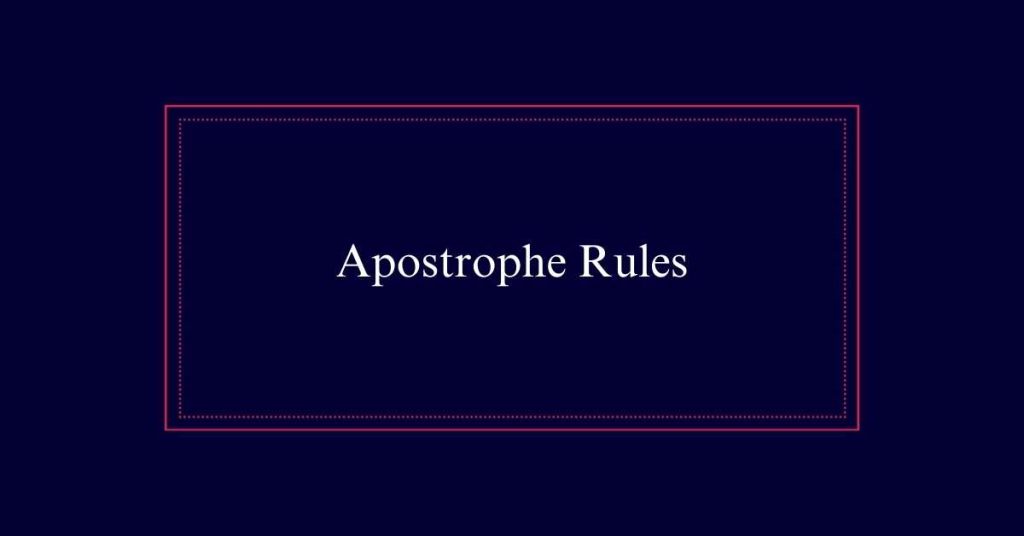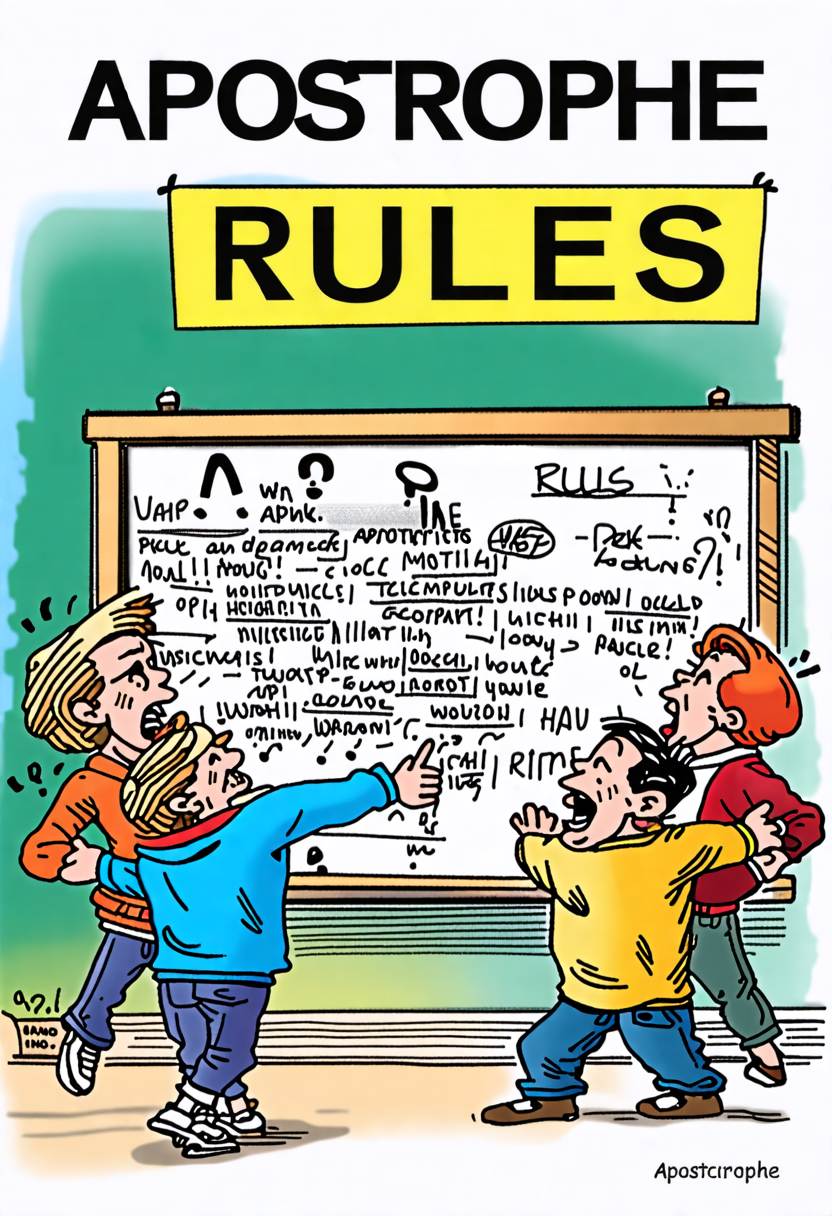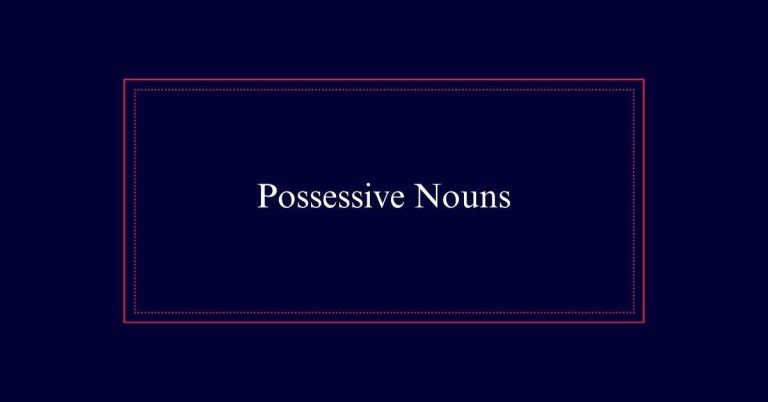Apostrophe Rules
Mastering apostrophe rules is essential for clear writing. Use apostrophes in contractions to replace omitted letters, like “don’t.” For possessive pronouns, remember “its” shows possession, while “it’s” is a contraction. Avoid using apostrophes for simple plurals—this mistake is often called the “grocer’s apostrophe.” An exception is with plurals of lowercase letters, such as “p’s.”
Contractions and Omissions
Contractions and omissions simplify writing by shortening words and phrases through the use of apostrophes. They represent omitted letters, making sentences more fluid and conversational.
Common examples include ‘He would’ becoming ‘He’d’ and ‘I have’ becoming ‘I’ve.’ These contractions often involve verbs, auxiliaries, or modals attached to other words. Using contractions can enhance the flow and informality of your writing, making it more approachable.
However, it is essential to use them correctly to maintain clarity. Incorrect usage can lead to confusion and misinterpretation. Remember, contractions should not be used in formal writing, such as academic papers or business reports, where a more formal tone is required.
Possessive Pronouns
Important, make sure
Possessive pronouns do not require apostrophes to show ownership. Unlike possessive nouns, possessive pronouns such as ‘mine,’ ‘yours,’ ‘his,’ ‘hers,’ ‘its,’ ‘ours,’ and ‘theirs’ do not use apostrophes.

This rule often causes confusion, particularly with ‘its’ and ‘it’s.’ Remember, ‘its’ shows possession, while ‘it’s’ is a contraction for ‘it is’ or ‘it has.’
Similarly, ‘whose’ is the possessive form of ‘who,’ and should not be confused with ‘who’s,’ a contraction for ‘who is’ or ‘who has.’ To avoid errors, make sure you only use apostrophes for contractions or possessive nouns, not possessive pronouns.
Plural Nouns
While understanding possessive pronouns is essential, it’s equally important to grasp the correct use of apostrophes with plural nouns.
Commonly, apostrophes are misused to form plurals, a mistake often known as the ‘grocer’s apostrophe.’ In most cases, simply add an ‘s’ to make a noun plural, without an apostrophe. For example, ‘cats,’ ‘dogs,’ and ‘houses’ are correct plural forms.
However, an exception exists for the plural form of lowercase letters. To avoid confusion, add an apostrophe, such as in ‘mind your p’s and q’s.’
The Grocer’s Apostrophe
Commonly known as the ‘grocer’s apostrophe,’ this mistake involves incorrectly adding an apostrophe to form plurals. You’ll often see this error in signs or advertisements, such as ‘apple’s’ instead of ‘apples.’ The apostrophe is not needed for regular plural nouns. This misuse can confuse readers and diminish the professionalism of your writing.
Exceptions exist, but they are rare; for example, use an apostrophe for the plural form of lowercase letters to avoid confusion, like ‘mind your p’s and q’s.’ To avoid this error, remember that regular plural nouns do not require an apostrophe.
Lowercase Letters Plurals
In English, forming the plural of lowercase letters requires an apostrophe to avoid confusion. This prevents misreading and guarantees clarity in communication. For instance, when referring to multiple instances of the letter ‘a,’ you write ‘a’s’ instead of ‘as.’
Here are key points to remember:
- Clarity: Using an apostrophe avoids misinterpretation.
- Consistency: Follow this rule uniformly for all lowercase letters.
- Examples: Write ‘p’s’ instead of ‘ps’ to avoid confusion.
- Error Prevention: Misreading can lead to misunderstandings.
Surrounding Punctuation
Proper placement of apostrophes with surrounding punctuation is essential for maintaining readability and clarity in your writing. An apostrophe should always attach directly to the word it modifies.
Never insert a period, comma, or question mark between the word and its apostrophe. For instance, write ‘John’s book,’ not ‘John’s, book.’
Additionally, be cautious with apostrophes at the beginning of contractions, as they can be mistaken for quotation marks. For example, use ”tis’ instead of ”tis.’
Modern word processors might auto-correct apostrophes incorrectly, so always double-check.
Avoiding Common Mistakes
Guaranteeing correct placement of apostrophes is just one aspect; avoiding common mistakes is equally important in achieving clarity and professionalism in your writing.
Here are four common errors to watch out for:
- Confusing possessive pronouns with contractions: ‘Its’ is possessive, while ‘it’s’ means ‘it is.’
- Using apostrophes to form plurals: Avoid adding apostrophes to make nouns plural, such as ‘apple’s’ instead of ‘apples.’
- Misplacing apostrophes in contractions: Ensure contractions like ‘don’t’ or ‘won’t’ are accurately punctuated.
- Incorrect use with surrounding punctuation: Do not separate apostrophes from their words with other punctuation marks.
Joint Constructions
When two or more individuals share possession, an apostrophe is used to indicate joint ownership. To show joint possession, add an apostrophe and an ‘s’ to the last noun in the series.
For example, ‘Sarah and John’s car’ means the car belongs to both Sarah and John. If each individual owns separate items, add an apostrophe and an ‘s’ to each noun.
For instance, ‘Sarah’s and John’s cars’ indicates that Sarah and John each have their own car.
Be cautious with pronouns. Use possessive pronouns without apostrophes, such as ‘their’ or ‘our.’ Joint constructions with pronouns should be clear to avoid confusion.
Proper usage guarantees clarity and precision in your writing.
Style Guide Consultation
Although mastering joint constructions is important, sometimes the rules of apostrophe usage can still be confusing, making it beneficial to consult a style guide for clarity. A reliable style guide can offer precise directives to guarantee correct usage.
Here are some key resources:
- The Chicago Manual of Style: Provides thorough rules on apostrophe use.
- The Associated Press Stylebook: Offers specific guidelines for journalists and writers.
- A reputable dictionary: Can clarify ambiguous cases and check for exceptions.
- Online language resources: Quick and accessible for immediate queries.







